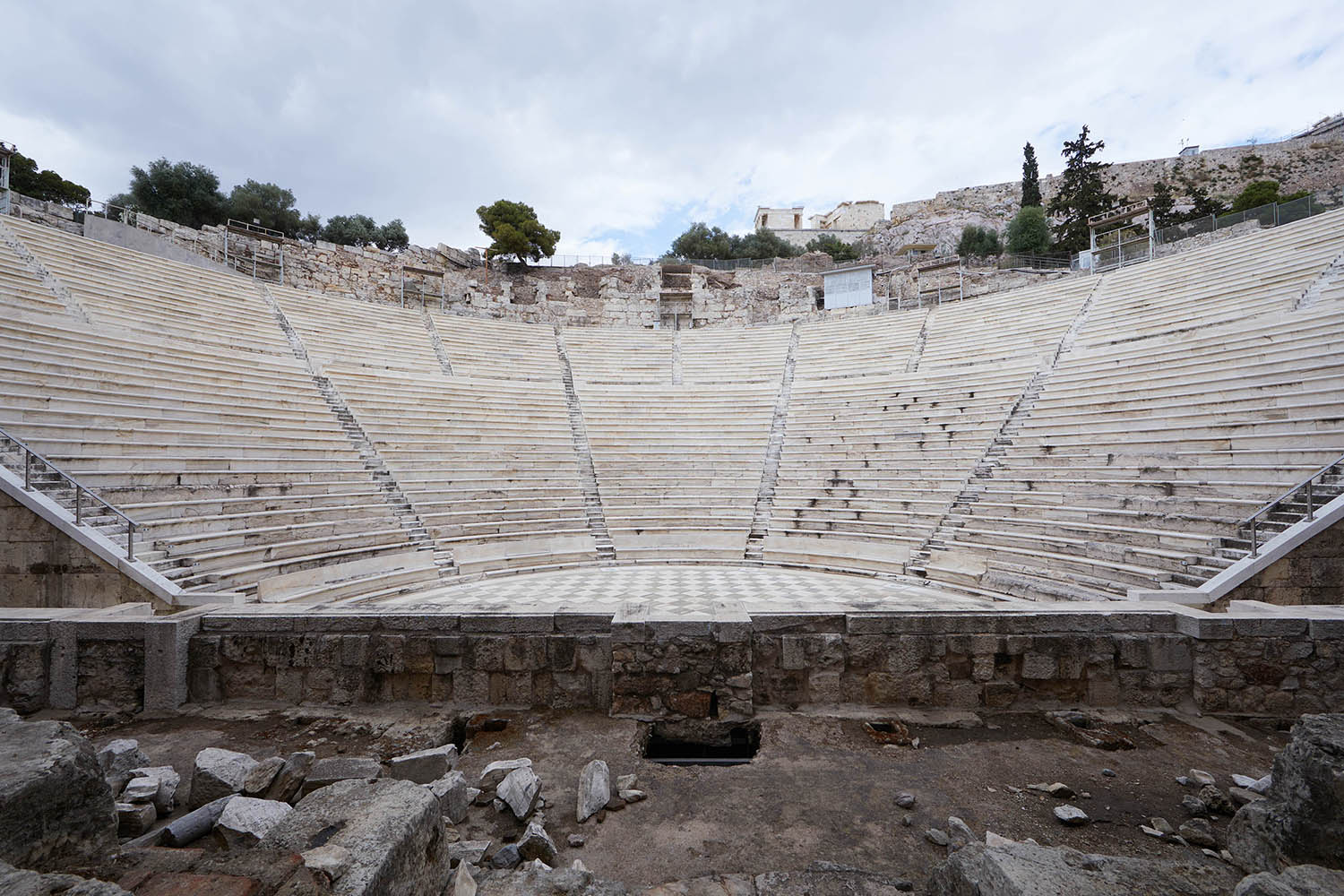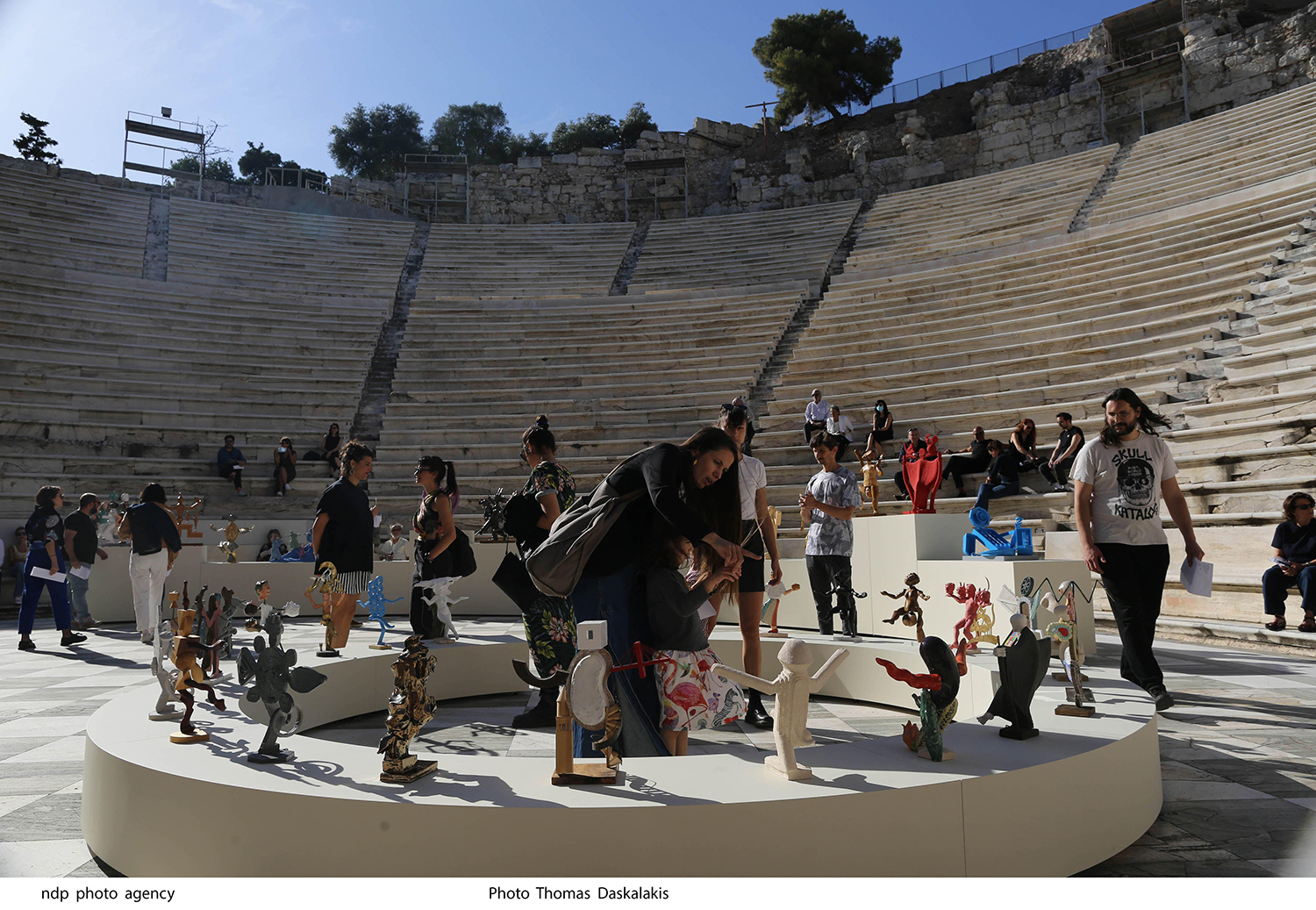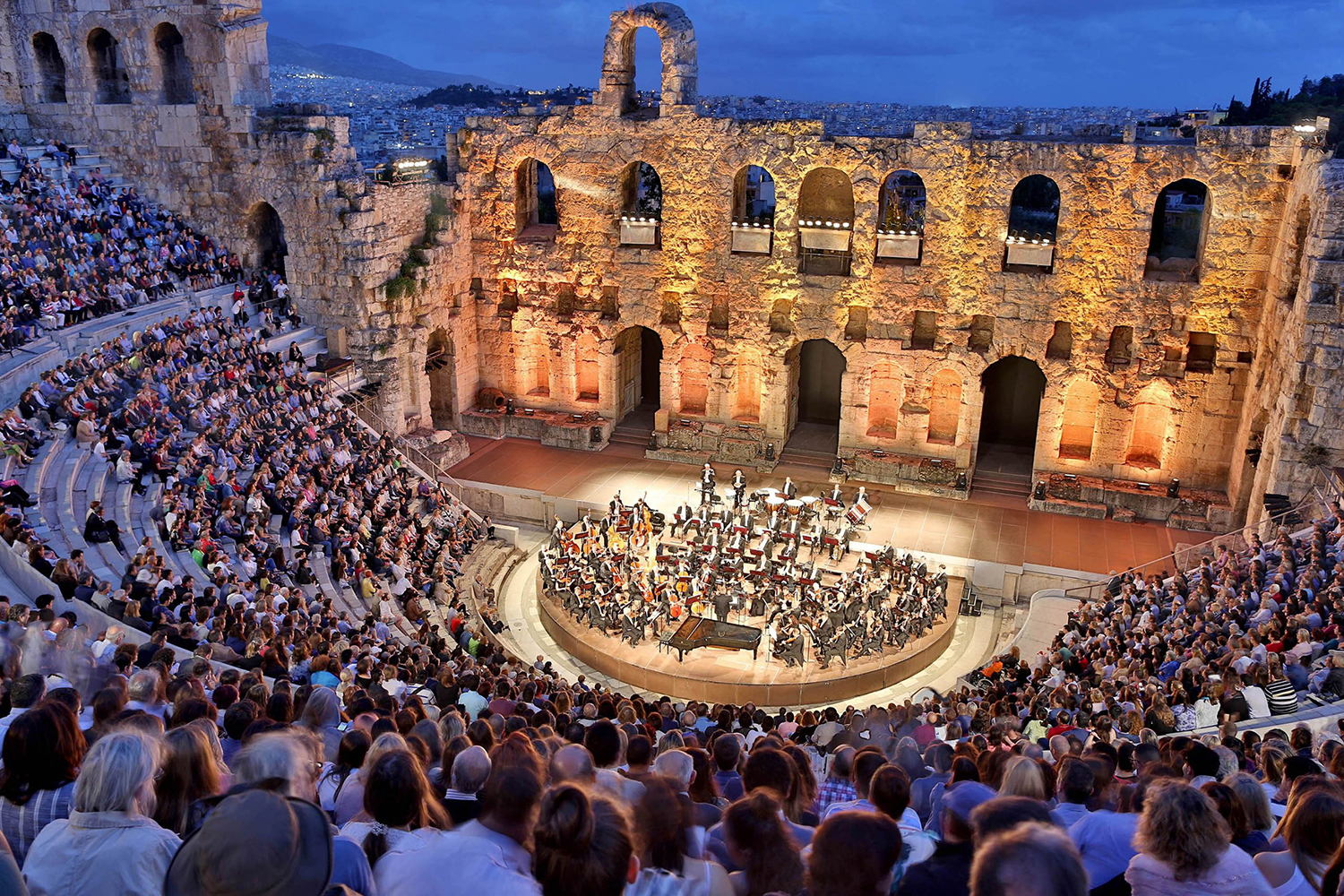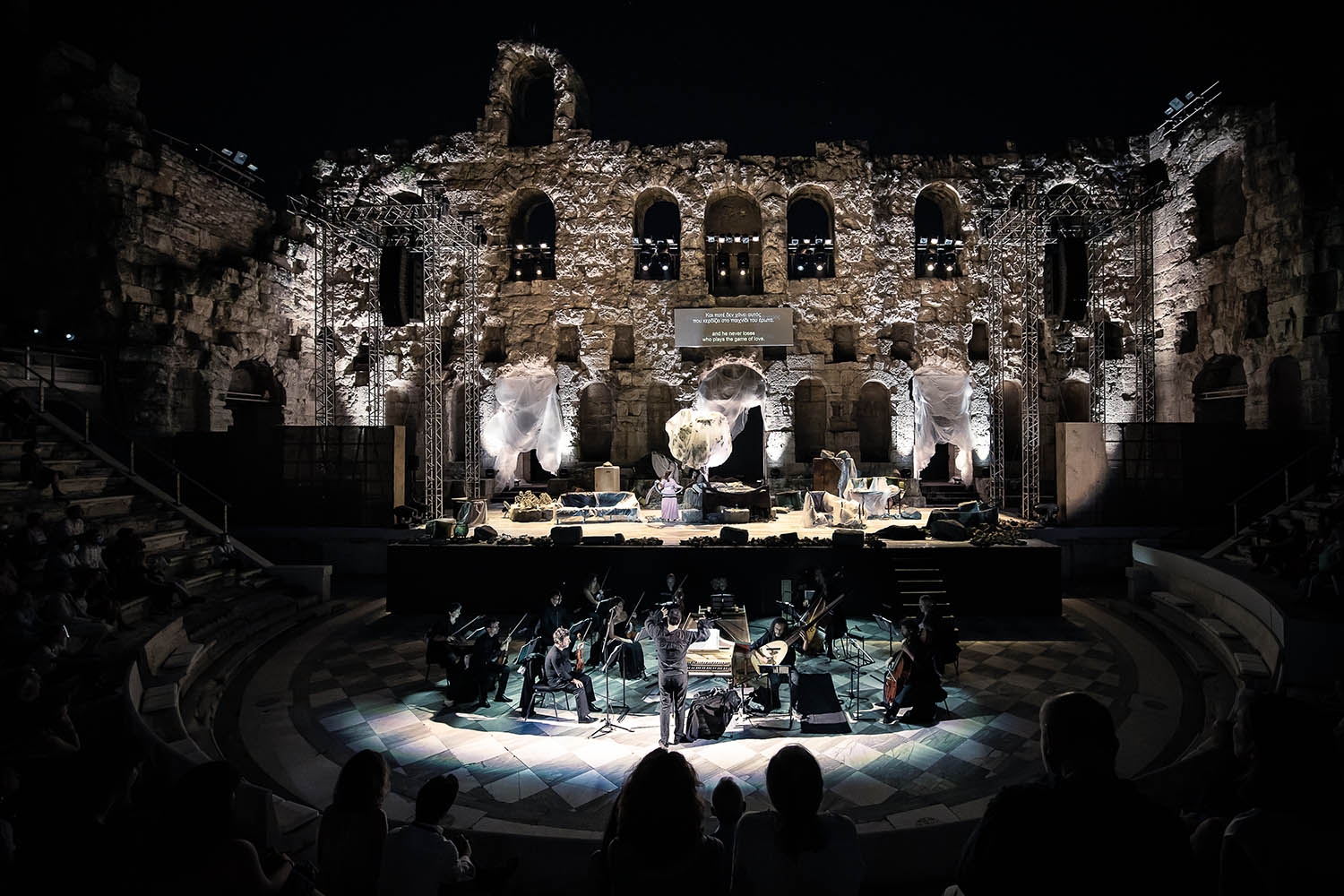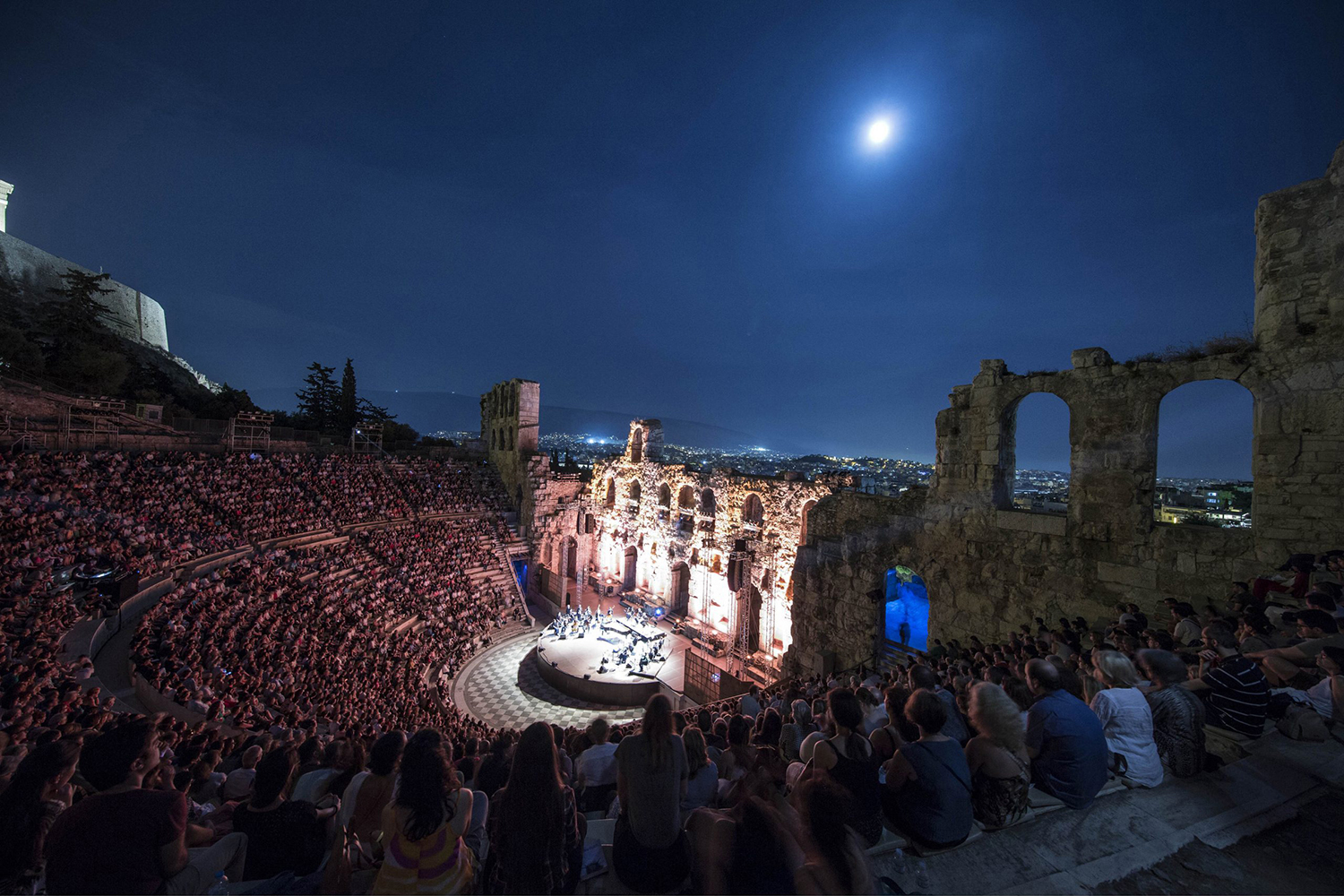General
Since the inception Athens Festival 63 years ago, the Odeon has hosted almost all the leading artists of Greek and international post-War music, dance and theatre. More specifically, the first three decades of the institution opened up an irreplaceable, and thus priceless for its time, channel of communication between the Athenian public and the cultural scene of the West, giving Greek artists the opportunity to distinguish themselves internationally.
When was it built and by whom?
It was built between 160 and 174 AD by the immensely wealthy Herodes Atticus, a philosopher from an old Athenian family, in memory of his wife Regilla.
Description of the building
A typical Roman odeon, large and exceptionally well-appointed, it was primarily used as a music venue. Its marble auditorium extends slightly beyond a semi-circle; it had a diameter of 80 metres and seated 4,800 spectators. The semi-circular orchestra was paved with black and white marble. 92 metres long and 28 metres high, and built of quarried stone, the impressive stage building was flanked by staircases decorated with mosaics. As was usual in Roman odeons, the inward-facing three-storey stage façade was inlaid with different coloured marbles and featured decorative pilasters and alcoves housing statues of members of the imperial family, as well as members of Herodes Atticus’ own family. It is clear from the archaeological finds that the Herodeon was covered, at least in part, by a wood and tile roof.
A brief archaeological timeline
When Pausanias visited Athens during the reign of Marcus Aurelius, he described the Herodeon as “the finest building of its type”.Unfortunately, the Herodeon was destroyed by a fire during the invasion of the Erouloi in 268 BC, less than a century after it was completed. Thenceforth, the theatre was used as a source of quarried stone, a dwelling, and a fort. In 1667, it was incorporated into the wall encircling the southern slopes of the Acropolis, and in 1857, shortly before the first archaeological investigations were undertaken, the auditorium was covered with a layer of soil 12 metres deep, and the site was being used to cultivate crops. A thorough excavation revealed the auditorium to be in extremely bad condition, with only a few rows of seats still in situ, and these highly calcified by the third-century BC fire.
The Odeon in the modern era Having won its independence from the Turks, the nascent Greek State’s need to bolster its identity led to it embracing the concept of historical continuity as a means of linking the ancient Greek past with the present. This saw the development of a pressing economic and cultural policy for putting the nation’s ancient theatres to use. As early as 1867, the recently excavated Herodeon hosted its first production of ancient drama, and a good deal of restoration and rebuilding work took place in the years 1898, 1900 and 1922. In the meantime, the historic site was regularly used as a venue for performances and public events. September 1920 saw the triumphant performance of Kalomoiris’ Symphony of Bravery at the Herodeon in the presence of the Greek Prime Minister, Eleftherios Venizelos, and a host of dignitaries, as part of the Greek Army’s celebrations in honour of its victories in Asia Minor. The founding of the Professional Theatre School in 1924 led to the establishment of the Herodeon as a venue for performances of ancient drama, while the Delphic Festivals organized by Angelos and Eva Palmer-Sikelianos (1927, 1930) gave added impetus to developments. The founding of the National Theatre (1932) led to more systematic research into the staging of ancient theatrical works. In 1936, the Metaxas Government established annual festival seasons with performances of ancient drama in open-air theatres, and the National Theatre had wooden seats constructed and placed on the Herodeon’s lower tiers. The case against “re-marbling” the entire theatre made so forcefully and publicly by the architect and town planner Konstantinos Doxiadis staved off interventions temporarily. During the German Occupation, the Herodeon hosted performances by the Athens State Orchestra, as well as performances by the newly-formed Greek National Opera with the young Maria Callas – then still known as Maria Kalogeropoulou – singing the lead in Beethoven’s Fidelio and Kalomoiris’ The Master Builder. In 1947, with the final battles of the Greek Civil War still raging, the Archaeological Council decided to re-pave the Herodeon’s floor in marble, and to proceed with a “complete rebuilding of its interior and exterior” with a view to “better serving the modern performances staged in the Odeon”. The costs were to be covered by the Greek National Theatre, with help from the Greek National Opera and the Athens State Orchestra. Professor Anastasios Orlandos was appointed to oversee the technical and academic aspects of the project. In 1952, the costs of this ongoing project were transferred to the Archaeological Service. At the same time, the road connecting the Makriyanni area with the square in front of the Odeon was moved a considerable distance to the south, and the hastily-constructed entertainment venues in the area were removed. The current entrance was built as part of the general reconstruction of the area around the Acropolis in line with detailed designs drawn up by the architect Dimitris Pikionis. His designs employ marble on a broad, monumental scale, with irregular flights of steps leading from the level of today’s Dionysiou Areopagitou Street to the area in front of the entrance to the Herodeon. Recesses and extensions on both sides serve to create a ‘picturesque’ dialogue with the archaeological site, and the surrounding excavated areas were planted with Mediterranean bushes and trees.
The Odeon becomes the venue of Athens Festival
The decision to establish the Athens Festival taken by the government of the elder Konstantinos Karamanlis was taken at a time when the Odeon, built by Herodes Atticus in memory of his beloved wife, was almost ready to receive its first audiences. A long series of arguments surrounding the concept of Hellenism had finally been concretely expressed, and the restored Herodeon was the perfect home for the newly-founded Athens Festival. The grand opening of the Athens Festival took place in August 1955, with the re-cladding of the upper tiers in marble not yet complete and the theatre surroundings bare, with just a few shrubs and saplings having been planted. But the venue was perfect. Once the re-marbling had been completed, and the destroyed areas above the parodoi had been removed, the auditorium of the Herodeon could seat 4,680 spectators, only 120 fewer than in ancient times. The square in front of the Odeon was paved at a much later date.








